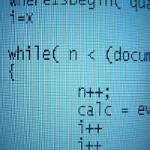Clean Code Principles: Writing Maintainable and Scalable Software
Writing clean code is more than just a best practice—it’s a mindset that ensures your software is maintainable, scalable, and easy to understand. Whether you’re a seasoned developer or just starting out, adopting clean code principles can save you time, reduce bugs, and make collaboration with other developers seamless. This article explores the core principles of clean code, why they matter, and how to apply them in your projects.
1. What is Clean Code?
Clean code is code that is easy to read, understand, and modify. It’s not just about making the code work; it’s about making it work well for the long term. Clean code follows a set of principles and practices that prioritize clarity, simplicity, and maintainability.
As Robert C. Martin, author of Clean Code, puts it:
“Clean code is code that has been taken care of. Someone has taken the time to keep it simple and orderly. They have paid appropriate attention to details. They have cared.”
2. Why Clean Code Matters
- Maintainability: Clean code is easier to maintain, reducing the time and effort required to fix bugs or add new features.
- Scalability: Well-structured code can grow with your project, making it easier to scale without introducing technical debt.
- Collaboration: Clean code is easier for other developers to understand, fostering better teamwork and knowledge sharing.
- Reduced Bugs: Clear and concise code minimizes the risk of errors and makes debugging faster.
3. Core Principles of Clean Code
1. Meaningful Names
Choose descriptive and meaningful names for variables, functions, and classes. Avoid vague names like data or temp. Instead, use names that convey intent, such as userProfile or calculateTotalPrice.
Bad Example:
1 | let x = 10; // What does 'x' represent? |
Good Example:
1 | let retryAttempts = 10; // Clearly indicates purpose |
2. Single Responsibility Principle (SRP)
Each function, class, or module should have only one responsibility. This makes your code easier to test, debug, and reuse.
Bad Example:
1 2 3 4 5 | function processUserData(user) { validateUser(user); saveUserToDatabase(user); sendWelcomeEmail(user);} |
Good Example:
1 2 3 | function validateUser(user) { /* ... */ }function saveUserToDatabase(user) { /* ... */ }function sendWelcomeEmail(user) { /* ... */ } |
3. Keep Functions Small
Functions should be short and focused. Ideally, a function should do one thing and do it well. If a function is too long or complex, break it into smaller functions.
Bad Example:
1 2 3 | function handleUserRequest(request) { // 50 lines of code doing multiple things} |
Good Example:
1 2 3 4 5 | function handleUserRequest(request) { validateRequest(request); processRequest(request); sendResponse(request);} |
4. Avoid Hardcoding
Hardcoding values makes your code inflexible and harder to maintain. Use constants, configuration files, or environment variables instead.
Bad Example:
1 | const discount = 0.1; // Hardcoded discount |
Good Example:
1 | const DISCOUNT_RATE = process.env.DISCOUNT_RATE || 0.1; // Configurable discount |
5. Write Readable Code
Code is read more often than it is written. Use proper indentation, spacing, and formatting to make your code visually appealing and easy to follow.
Bad Example:
1 | if(user.isActive&&user.hasSubscription){sendNotification(user);} |
Good Example:
1 2 3 | if (user.isActive && user.hasSubscription) { sendNotification(user);} |
6. Write Tests
Clean code is testable code. Writing unit tests ensures that your code works as expected and makes it easier to refactor without breaking functionality.
Example:
1 2 3 4 5 6 7 8 | function add(a, b) { return a + b;}// Unit testtest('add function should return the sum of two numbers', () => { expect(add(2, 3)).toBe(5);}); |
7. Refactor Regularly
Refactoring is the process of improving the structure of existing code without changing its behavior. Regularly refactor your code to keep it clean and maintainable.
Example:
Before refactoring:
1 2 3 4 5 6 7 | function calculateTotal(items) { let total = 0; for (let i = 0; i < items.length; i++) { total += items[i].price; } return total;} |
After refactoring:
1 2 3 | function calculateTotal(items) { return items.reduce((total, item) => total + item.price, 0);} |
4. Challenges of Writing Clean Code
- Time-Consuming: Writing clean code takes time and effort, especially in the early stages of a project.
- Subjectivity: What’s clean to one developer might not be clean to another. Establishing team-wide standards can help.
- Balancing Act: Striking a balance between clean code and meeting deadlines can be challenging.
5. Conclusion: The Long-Term Benefits of Clean Code
Clean code is an investment in the future of your software. While it may require more effort upfront, the long-term benefits—maintainability, scalability, and reduced bugs—far outweigh the costs. By adopting clean code principles, you’ll not only improve the quality of your work but also make life easier for yourself and your team.
As Martin Fowler famously said:
“Any fool can write code that a computer can understand. Good programmers write code that humans can understand.”
6. References
- Clean Code: A Handbook of Agile Software Craftsmanship by Robert C. Martin
- Refactoring: Improving the Design of Existing Code by Martin Fowler
- The Single Responsibility Principle (SRP)
- Writing Clean Code in JavaScript
- Unit Testing Best Practices



